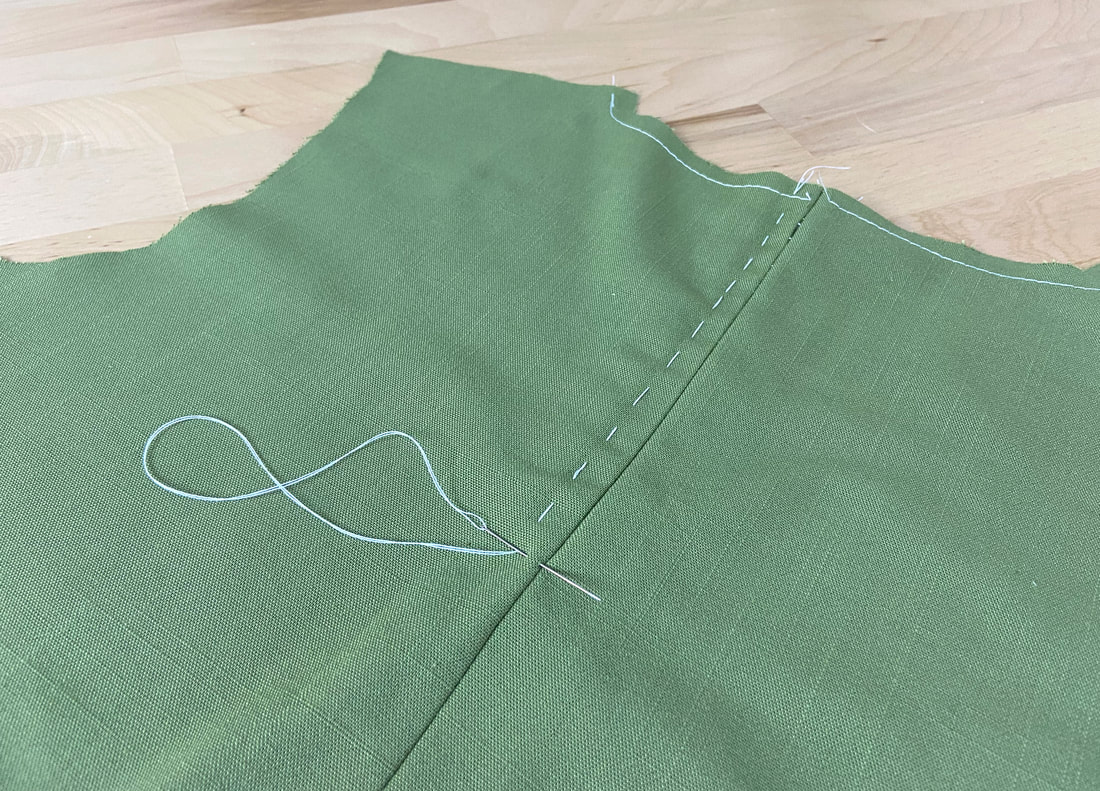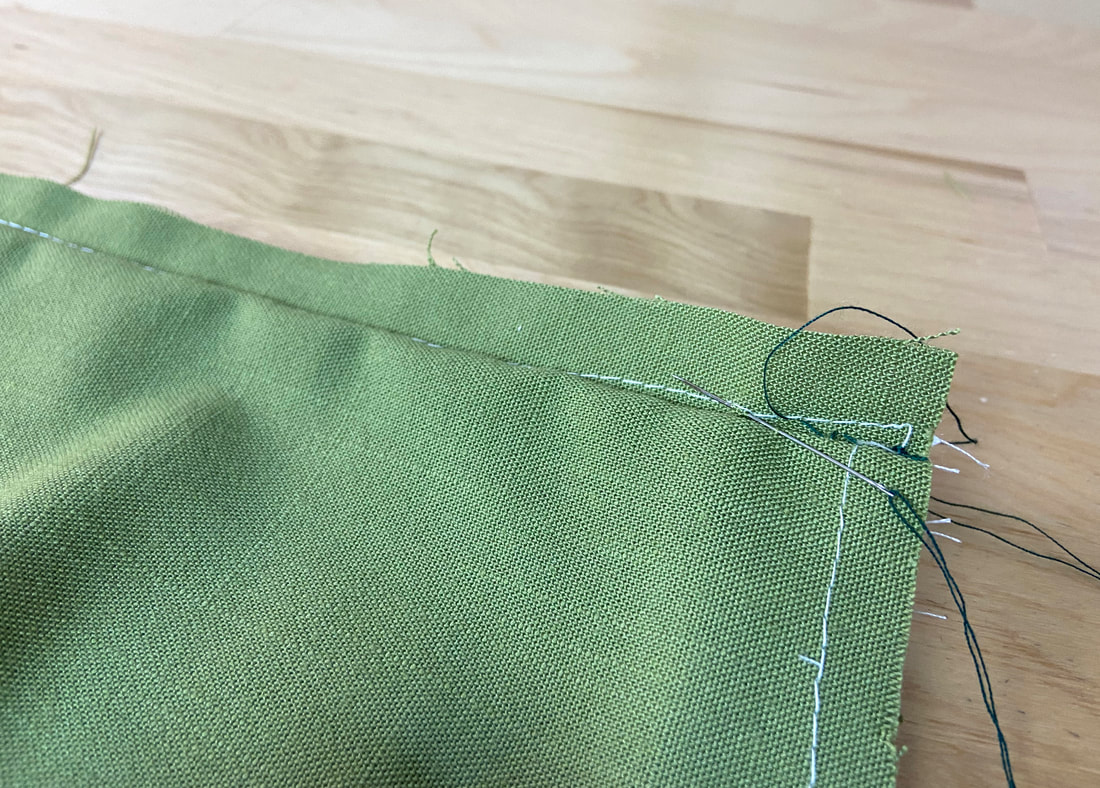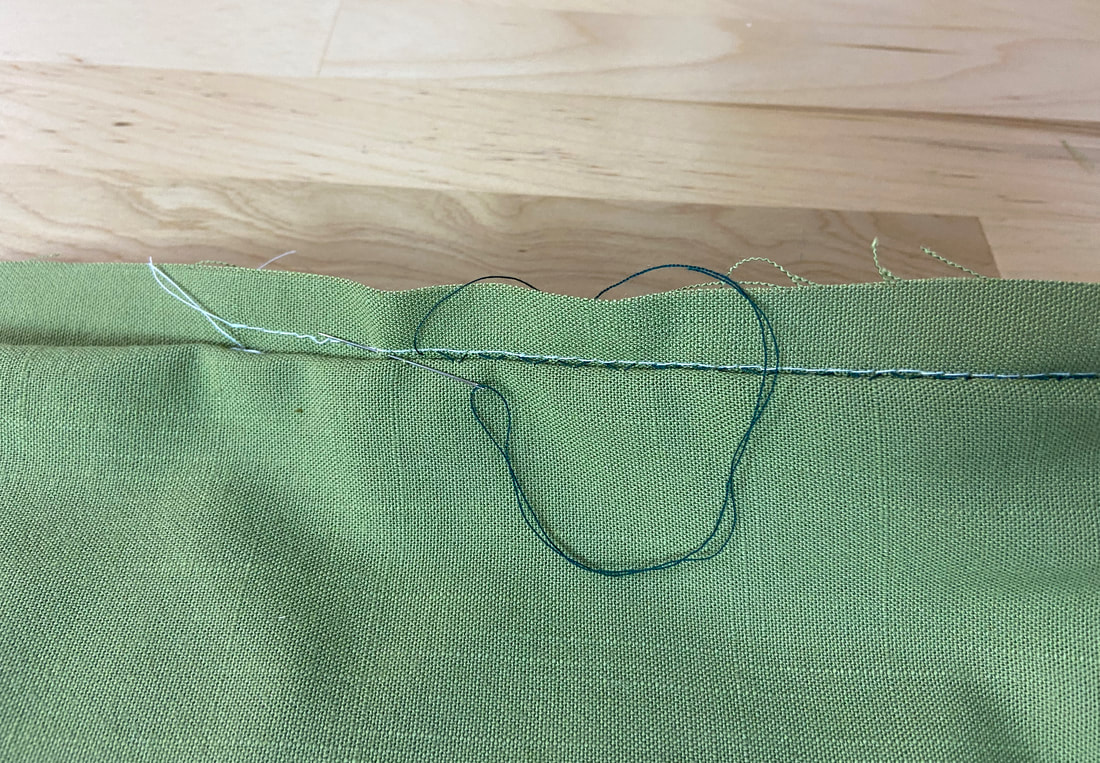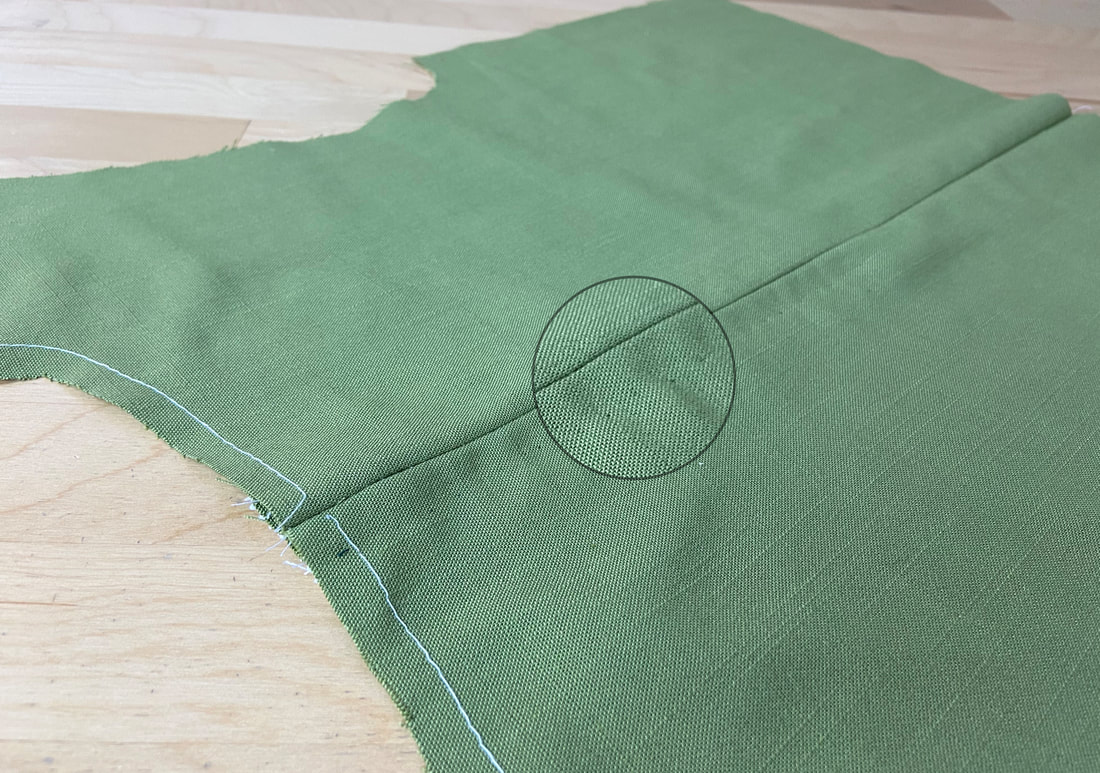Mini Tutorial: How To Sew A Blind Stitched Zipper Application By Hand
A hand-applied blind stitched zipper application results in a placket zipper style with no stitching visible on the face of the garment. A blind stitched technique can be used with most conventional zipper applications but is most commonly utilized with lapped and centered zippers.
1. Start by stitching the zipper as you would in a conventional application. Once the zipper is permanently attached, hand baste the placket outline catching the zipper tape and seam allowance layer underneath. The hand basting should be positioned at the exact location of the desired finished zipper placket. This hand basting stitch will also keep the layers perfectly aligned during the blind stitching process.
2. Lift the garment layer housing the placket to expose the seam allowance layer underneath. On the side of the seam allowance layer that touches the garment layer, stitch through the seam allowance and 1-2 threads form the garment surface to connect the two layer together. The stitch should be applied following the hand basting as a guide- in this case the hand basting will keep the seam allowance and garment layer together at the location where the blind stitching should be applied.
3. Continue blind stitching, alternating form the seam allowance to the wrong side of the garment surface until you arrive at the bottom of the zipper closure. At this point, stitch in place a few times on the seam allowance layer to lock the threads thus prevent the stitch from unraveling with use.
On the right side of the zipper application, the stitch should be essentially invisible yet form a fully functional placket when the zipper is opened and closed. This is due to the fact that the stitches were only applied through 1-2 threads on the wrong side of the garment's surface.
Contrary to the example shown above, using matching color thread will help the stitch fully disappear on the garment's face side.
Contrary to the example shown above, using matching color thread will help the stitch fully disappear on the garment's face side.





